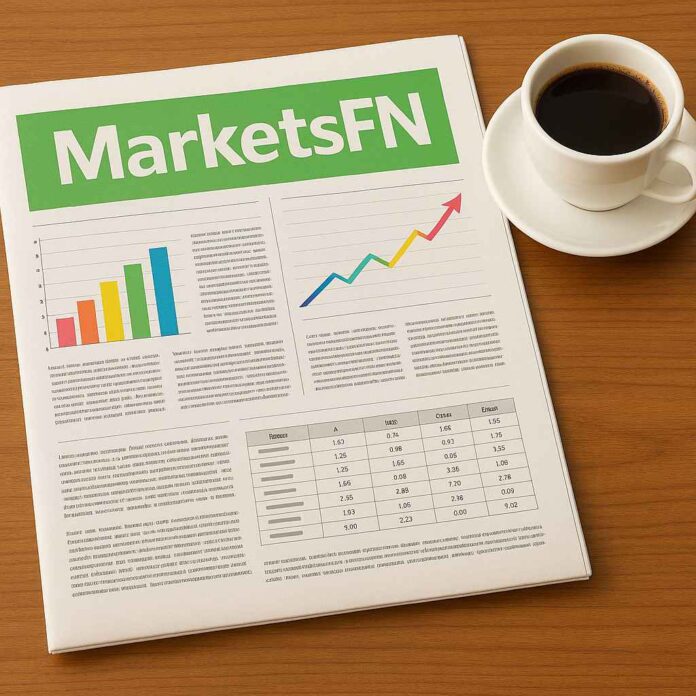Introduction
India’s capital markets are witnessing a surge in passive investment products, and the latest entrant is the Edelweiss Nifty 50 ETF, a scheme designed to replicate the performance of the Nifty 50 Total Return Index (TRI). Launched on 15 September 2025, this exchange traded fund (ETF) adds another low-cost, transparent option for investors seeking broad-based exposure to India’s most liquid and stable large-cap companies.
The ETF will be listed on the National Stock Exchange (NSE) and Bombay Stock Exchange (BSE), offering investors the ability to trade units in real-time, much like any listed equity security. Backed by Edelweiss Mutual Fund, a subsidiary of Edelweiss Asset Management Limited (EAML), the fund is positioned to capture growing demand for passive strategies in India.
This article examines the fund’s structure, objectives, features, risk profile, and market significance.
Fund Objective
The primary objective of the Edelweiss Nifty 50 ETF is straightforward: to generate returns corresponding to the total returns of the Nifty 50 TRI, subject to tracking errors. The Nifty 50 TRI represents the performance of the Nifty 50 index along with the reinvestment of dividends, providing a more complete picture of investor returns than the price index alone.
By replicating the Nifty 50 TRI, the ETF aims to provide investors with a low-cost, diversified portfolio of India’s top 50 blue-chip companies, spanning multiple sectors such as financial services, energy, IT, and consumer goods.
Structure and Features
1. Benchmark Index
- Nifty 50 Total Return Index (TRI) is the benchmark.
- Covers the top 50 large-cap companies listed on NSE.
- Provides sectoral balance, with significant weightage to financials, IT, energy, and consumer staples.
2. Asset Allocation
- Equity and equity-related instruments of Nifty 50 companies: 95–100% of assets.
- Cash, money market instruments, and debt securities: up to 5%, primarily for liquidity management.
3. Liquidity and Trading
- Units will be traded on NSE and BSE during market hours, offering intraday liquidity.
- Investors can also directly transact with the fund house in creation unit size (usually large institutional blocks).
4. Exit Load
- The ETF carries no exit load, making it attractive for both short-term traders and long-term investors.
5. Minimum Investment
- Retail investors can buy as little as one unit on the stock exchange.
- Institutional investors can subscribe/redeem in creation unit size, typically multiples of large blocks (e.g., 25,000 units).
6. NAV Disclosure
- Daily Net Asset Value (NAV) will be published on the fund website.
- Intraday indicative NAVs (iNAVs) will be available to reflect real-time values.
Costs and Tracking Error
One of the defining characteristics of ETFs is low expense ratios, and the Edelweiss Nifty 50 ETF is no exception. While exact expense ratios will be disclosed upon listing, Nifty 50 ETFs in India typically carry expense ratios as low as 0.05% to 0.15%, significantly cheaper than actively managed equity funds.
However, investors must account for tracking error — the difference between the ETF’s performance and that of the Nifty 50 TRI. Tracking error arises due to:
- Cash holdings for liquidity.
- Transaction costs.
- Corporate actions such as rights issues or dividends.
Edelweiss Mutual Fund has indicated efforts to minimize tracking error through efficient portfolio replication.
Risk Factors
The ETF is categorized under the “Very High Risk” bracket, consistent with equity-oriented schemes. Investors should note:
- Market Risk: Performance directly depends on Nifty 50 companies’ performance, which can be volatile.
- Tracking Risk: As mentioned, fund returns may deviate from the benchmark due to replication limitations.
- Liquidity Risk: While ETFs trade like stocks, trading volumes may vary, potentially affecting exit opportunities for investors.
- Systemic Risk: Macroeconomic factors such as inflation, interest rates, and global shocks can impact returns.
Despite these risks, the ETF remains attractive for investors with long-term horizons who seek exposure to India’s corporate leaders.
Suitability
The Edelweiss Nifty 50 ETF is suitable for:
- Retail investors seeking low-cost equity exposure.
- Institutional investors looking for portfolio hedging or passive core allocation.
- Long-term investors aiming for wealth creation aligned with India’s large-cap growth story.
- Traders who want intraday exposure to the Nifty 50.
Investors must, however, align their risk tolerance with the fund’s very high-risk classification.
Market Context: ETFs in India
The launch of the Edelweiss Nifty 50 ETF comes at a time when passive investing is gaining momentum in India.
- According to AMFI (Association of Mutual Funds in India), ETF assets under management (AUM) have grown at a CAGR of over 35% in the last five years.
- The Nifty 50 remains the most tracked index in India, with several ETF options already available from Nippon India, ICICI Prudential, HDFC, and SBI.
- Increasing investor awareness, regulatory support, and the rise of systematic investment platforms have contributed to the surge in ETF adoption.
Globally, ETFs are already a dominant investment vehicle. India is now following this trajectory, albeit at a different pace.
Competitive Landscape
How does the Edelweiss Nifty 50 ETF stack up against competitors?
- Nippon India ETF Nifty BeES: Among the oldest and most liquid ETFs in India, with very low expense ratio and high trading volumes.
- ICICI Prudential Nifty ETF: Backed by ICICI AMC, known for competitive pricing.
- HDFC Nifty 50 ETF: Offers similar exposure with relatively strong liquidity.
Edelweiss brings to the table its track record in passive products, having already managed thematic and index-based ETFs. The new ETF strengthens its presence in the core index space.
Regulatory and Governance Oversight
The scheme will operate under the SEBI Mutual Fund Regulations, 1996, ensuring strict compliance with transparency, investor protection, and governance standards.
Key governance features:
- Daily disclosures of NAV and portfolio holdings.
- Periodic reporting of tracking error.
- Oversight by trustees and custodians to ensure adherence to investment objectives.
Such measures reinforce investor confidence in the product.
Investor Implications
- Diversification: Exposure to 50 large-cap companies across multiple sectors.
- Cost Efficiency: Low expense ratio compared to actively managed funds.
- Liquidity: Tradable on stock exchanges, providing flexibility.
- Transparency: Daily portfolio and NAV disclosures.
- Suitability: Best for investors with medium to long-term horizons seeking equity growth.
Conclusion
The Edelweiss Nifty 50 ETF launch marks another step in the deepening of India’s passive investment landscape. By offering a low-cost vehicle tied to the Nifty 50 TRI, the fund allows investors to capture India’s large-cap growth story while maintaining liquidity and transparency.
As ETFs gain traction in India, products like this are likely to form the core of many retail and institutional portfolios, serving as building blocks for wealth creation. The challenge for Edelweiss will be to ensure liquidity and minimal tracking error, thereby building investor confidence in the fund’s long-term viability.
In a market increasingly shifting toward cost-efficient passive products, the Edelweiss Nifty 50 ETF has arrived at an opportune time, providing investors with a credible and competitive option for participating in India’s equity market growth.
References
- Edelweiss Mutual Fund, Scheme Information Document: Edelweiss Nifty 50 ETF, 15 Sept 2025
- Association of Mutual Funds in India (AMFI), ETF Market Data
- https://www.sebi.gov.in/
Disclaimer
The content on MarketsFN.com is provided for educational and informational purposes only. It does not constitute financial advice, investment recommendations, or trading guidance. All investments involve risks, and past performance does not guarantee future results. You are solely responsible for your investment decisions and should conduct independent research and consult a qualified financial advisor before acting. MarketsFN.com and its authors are not liable for any losses or damages arising from your use of this information.





